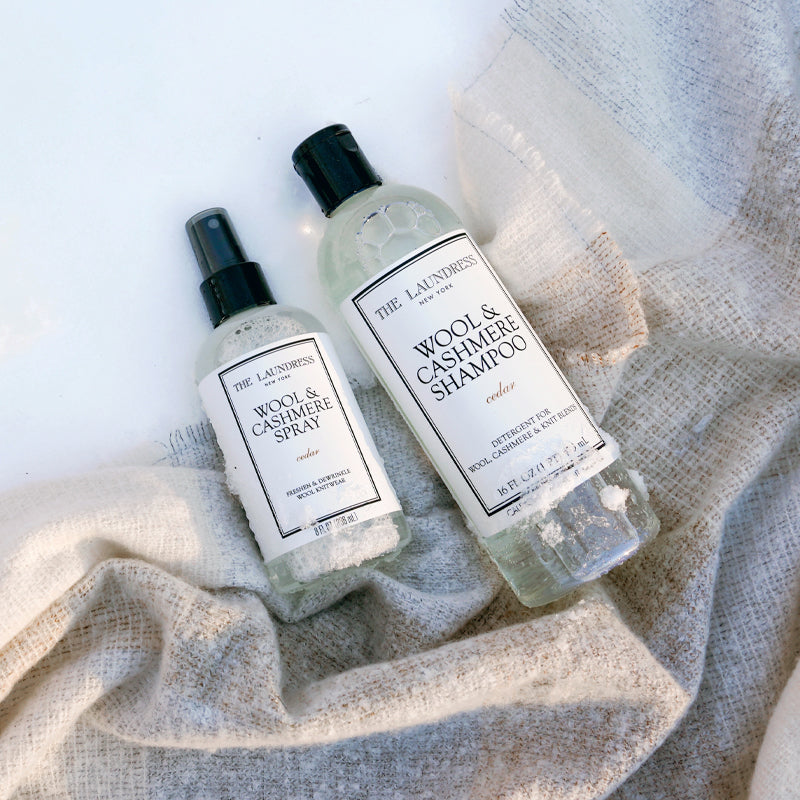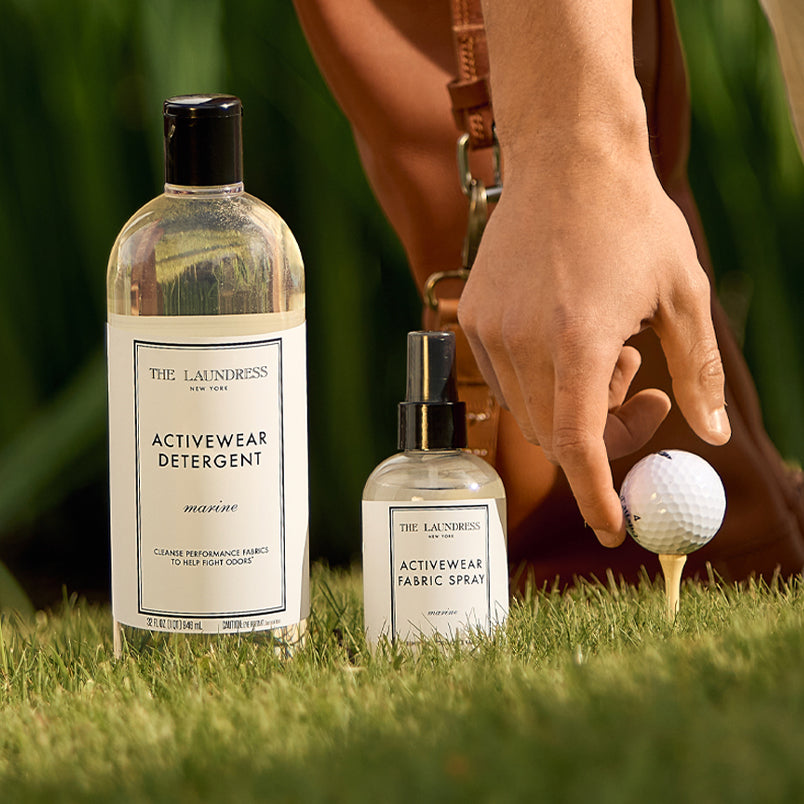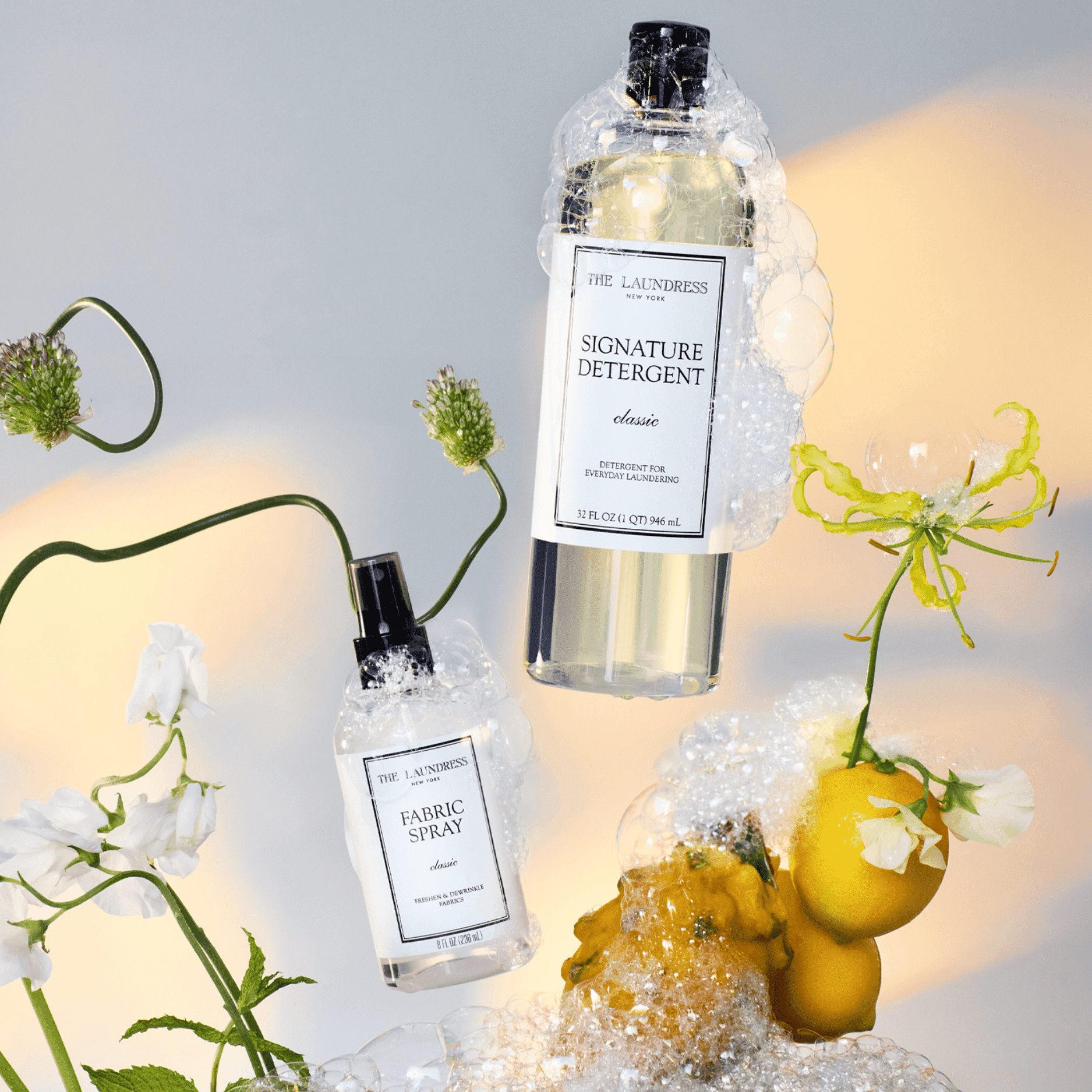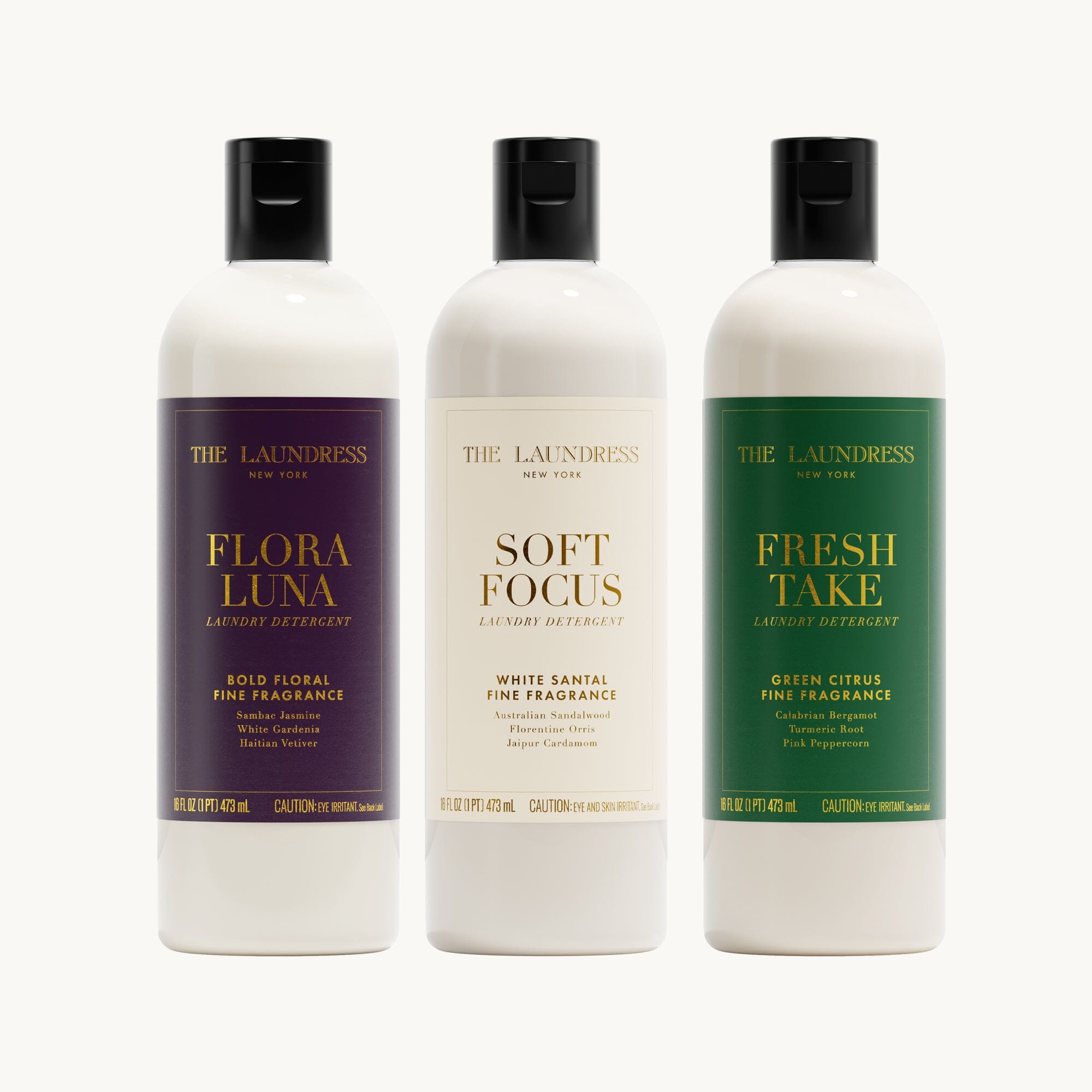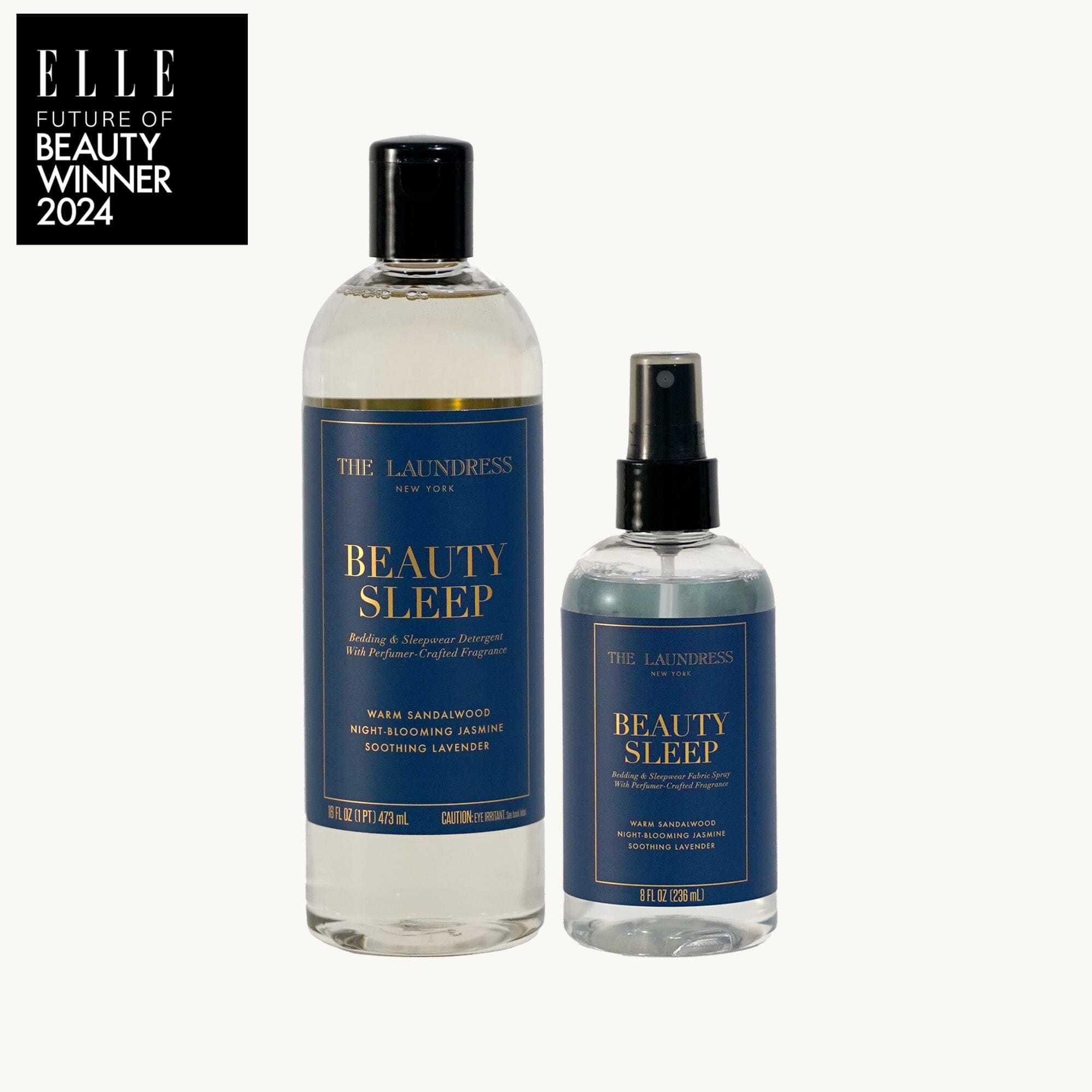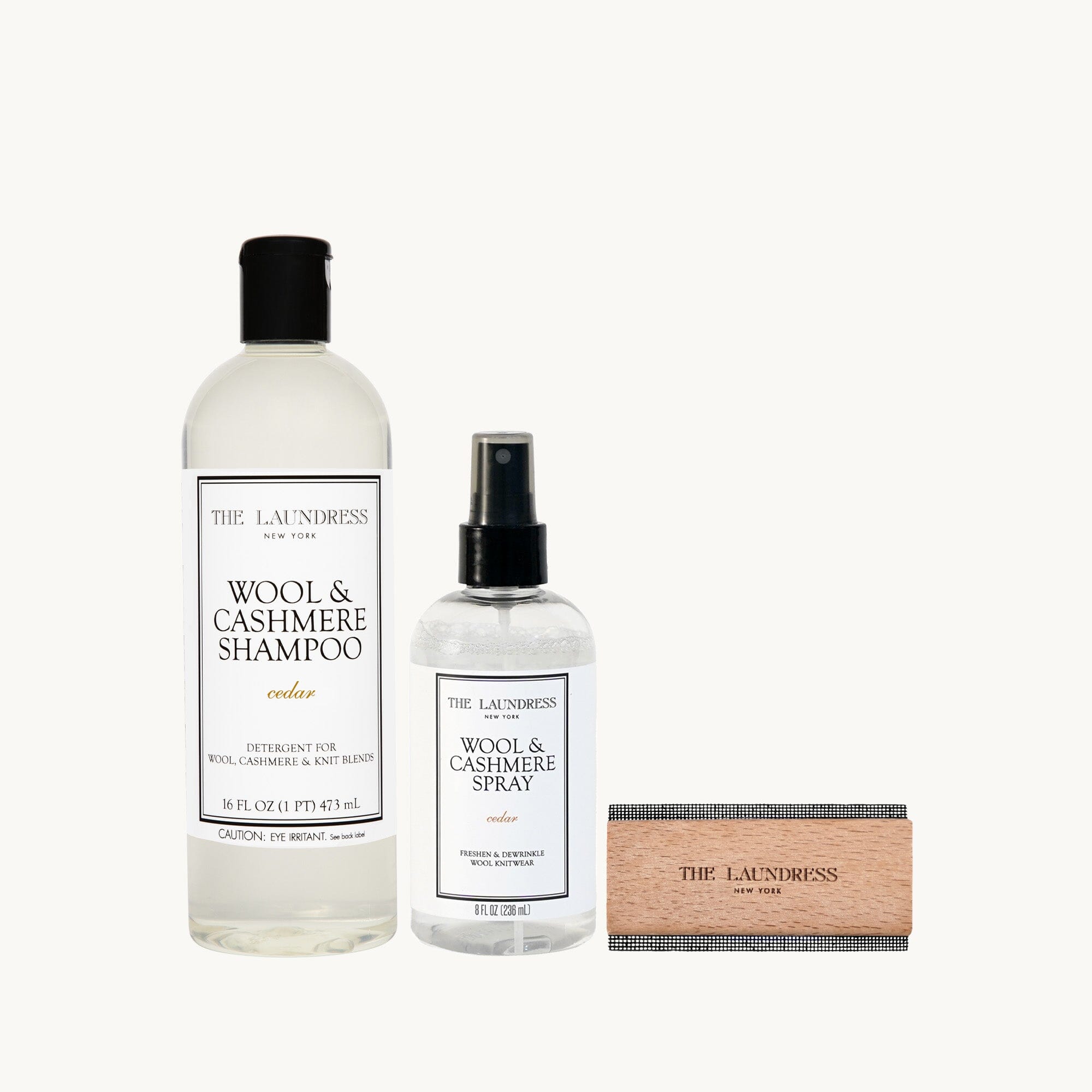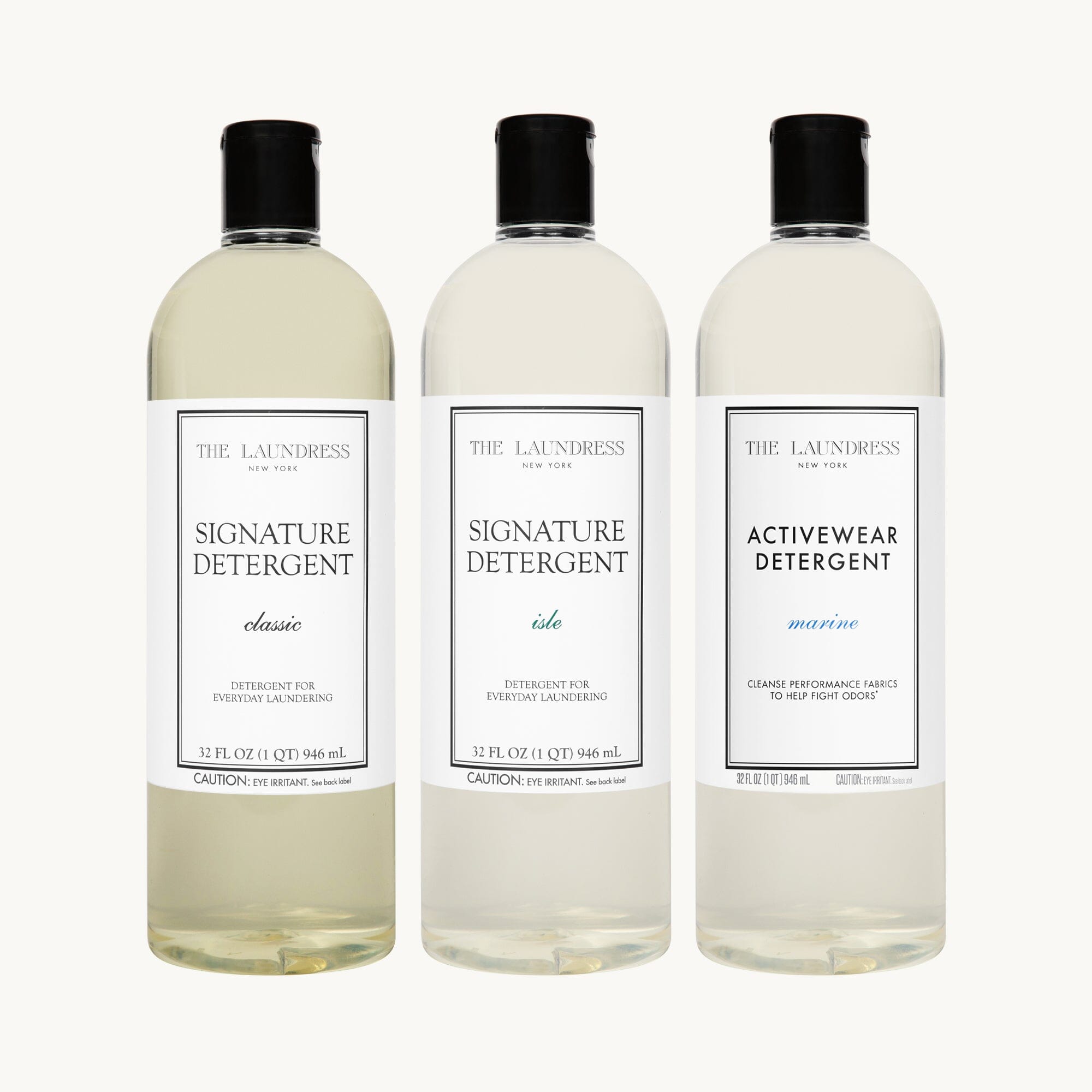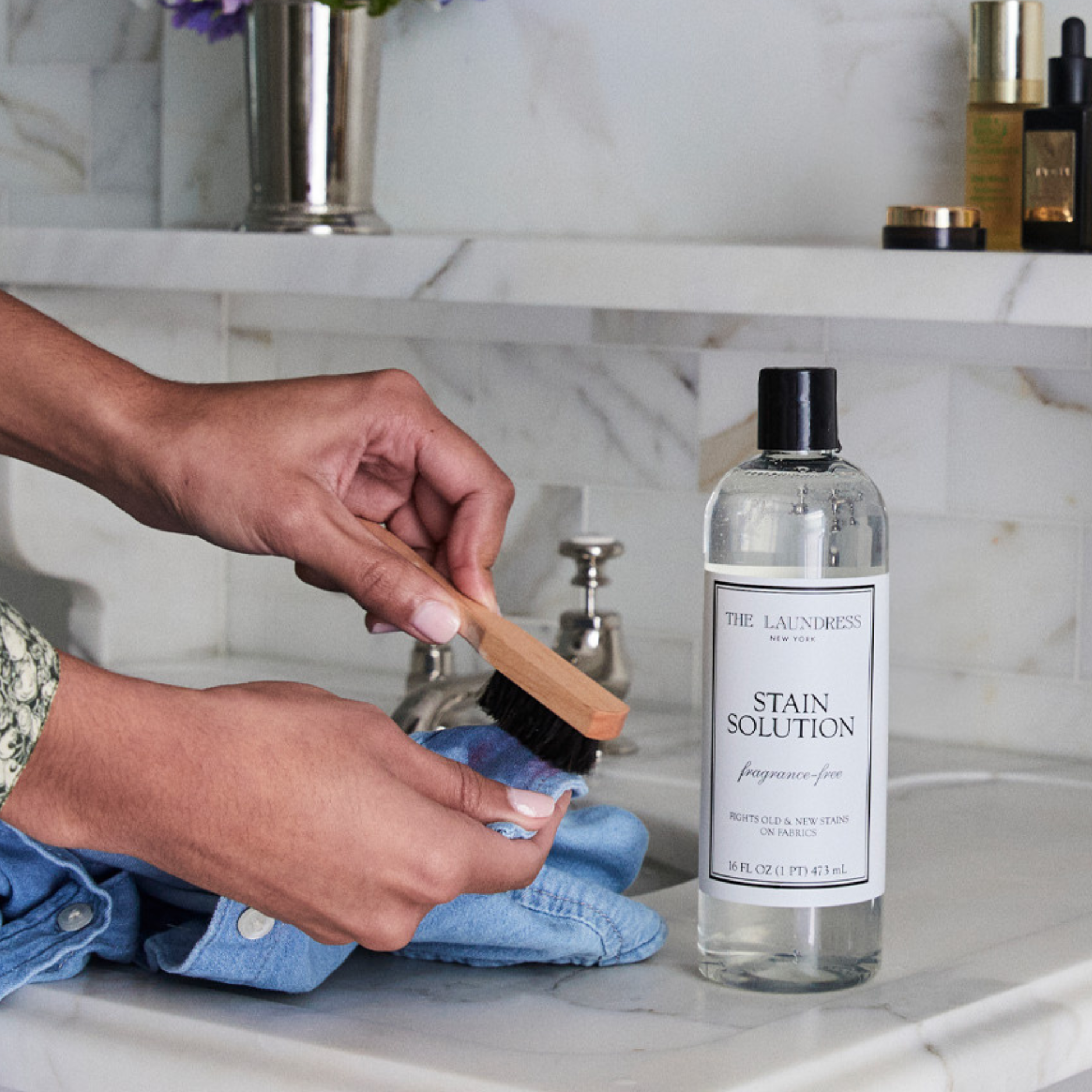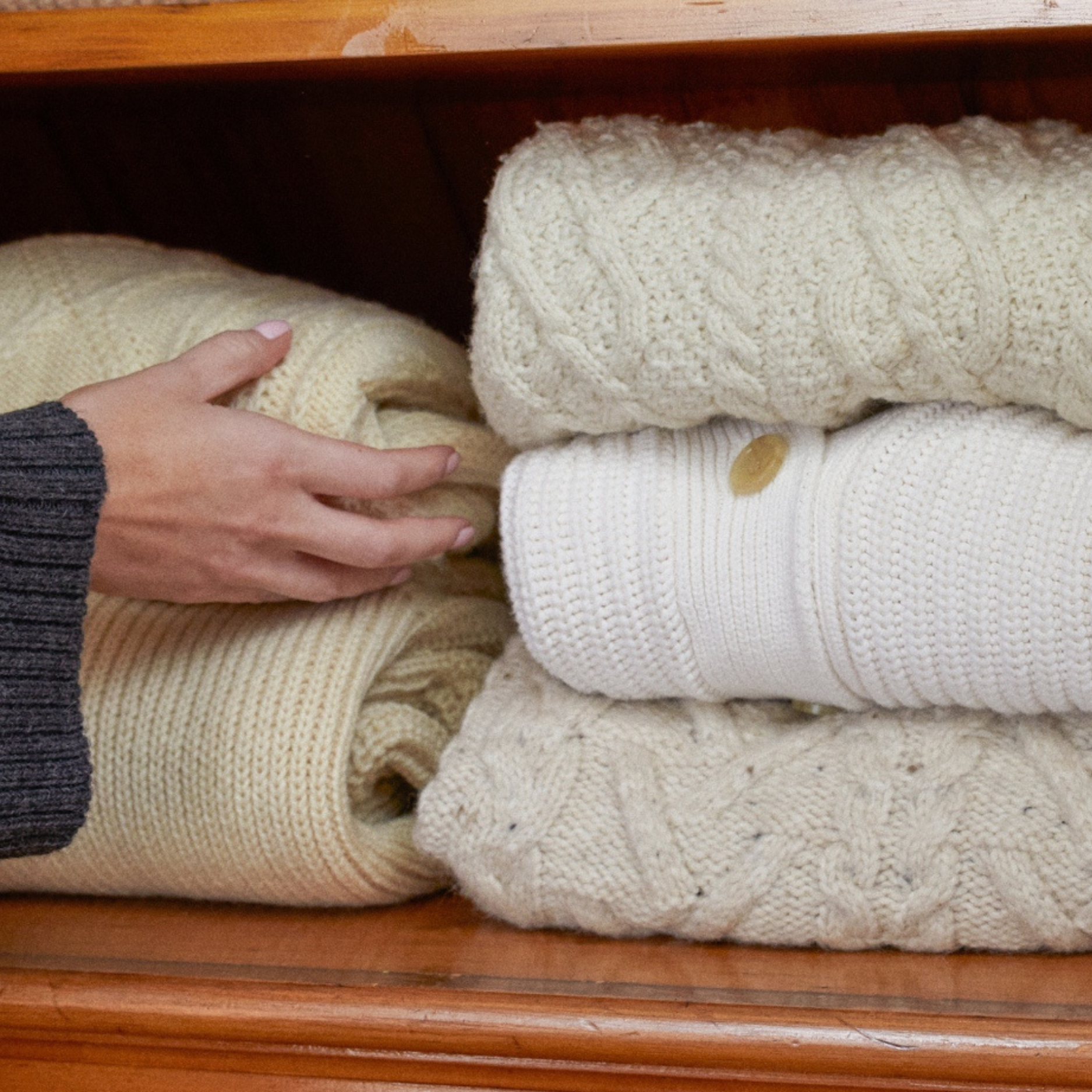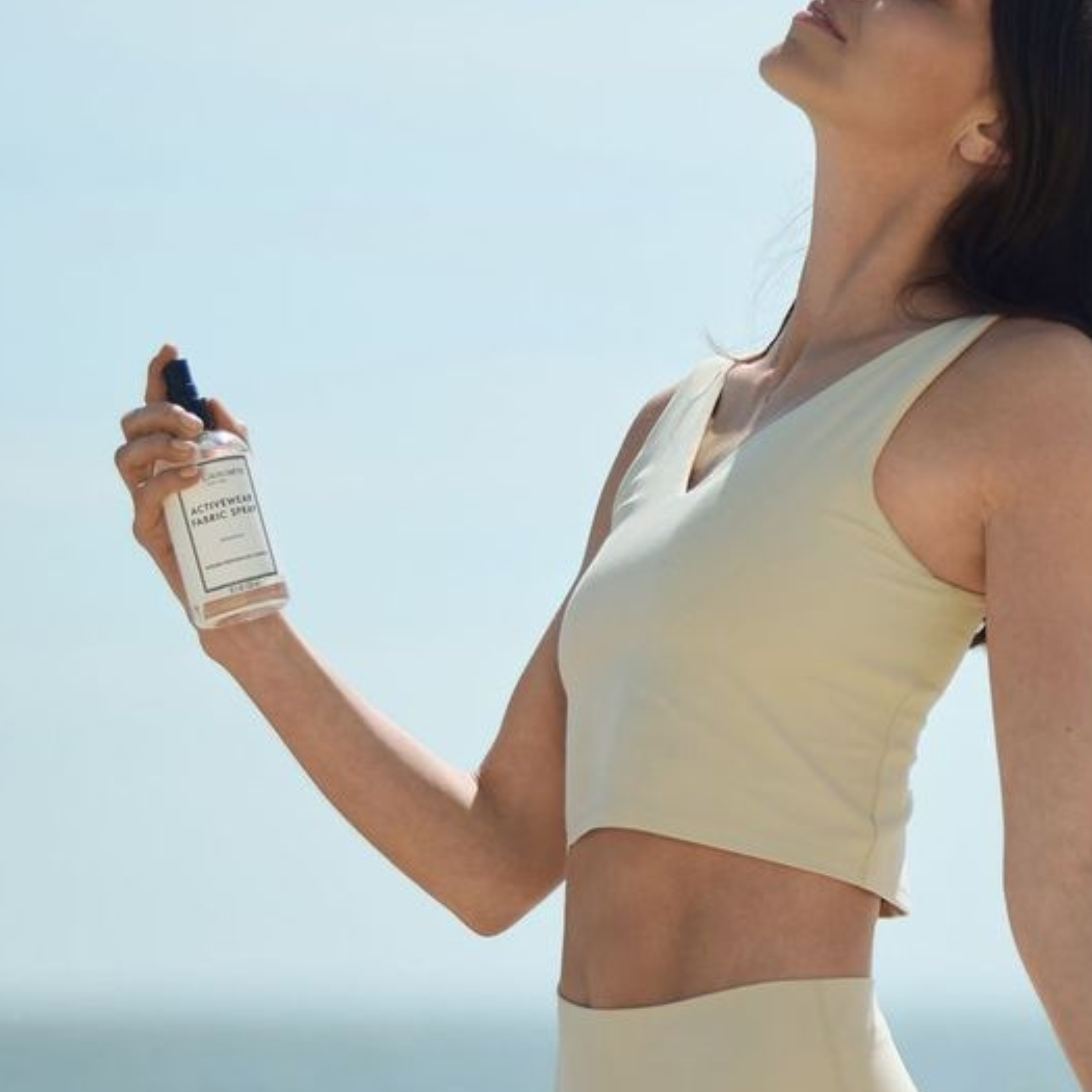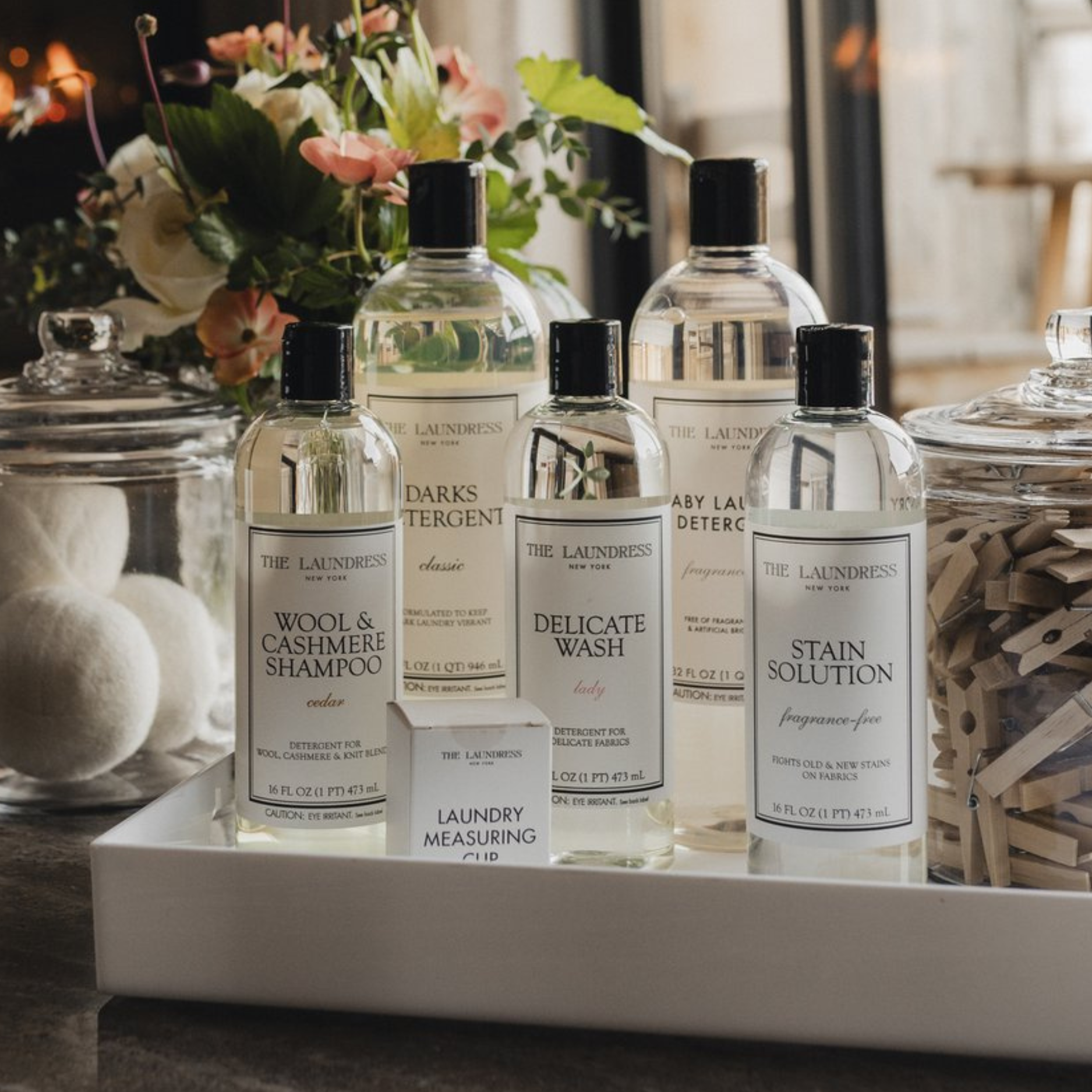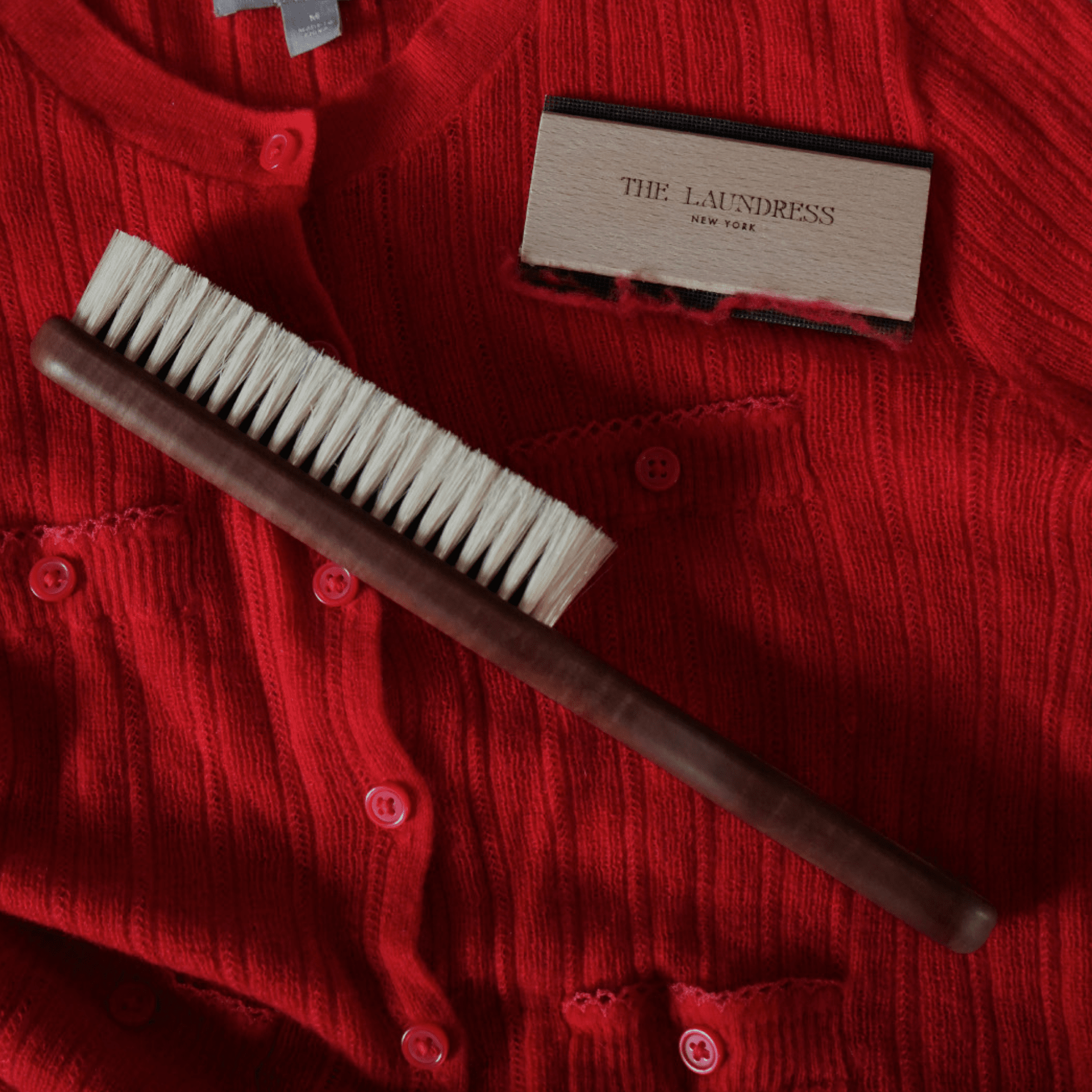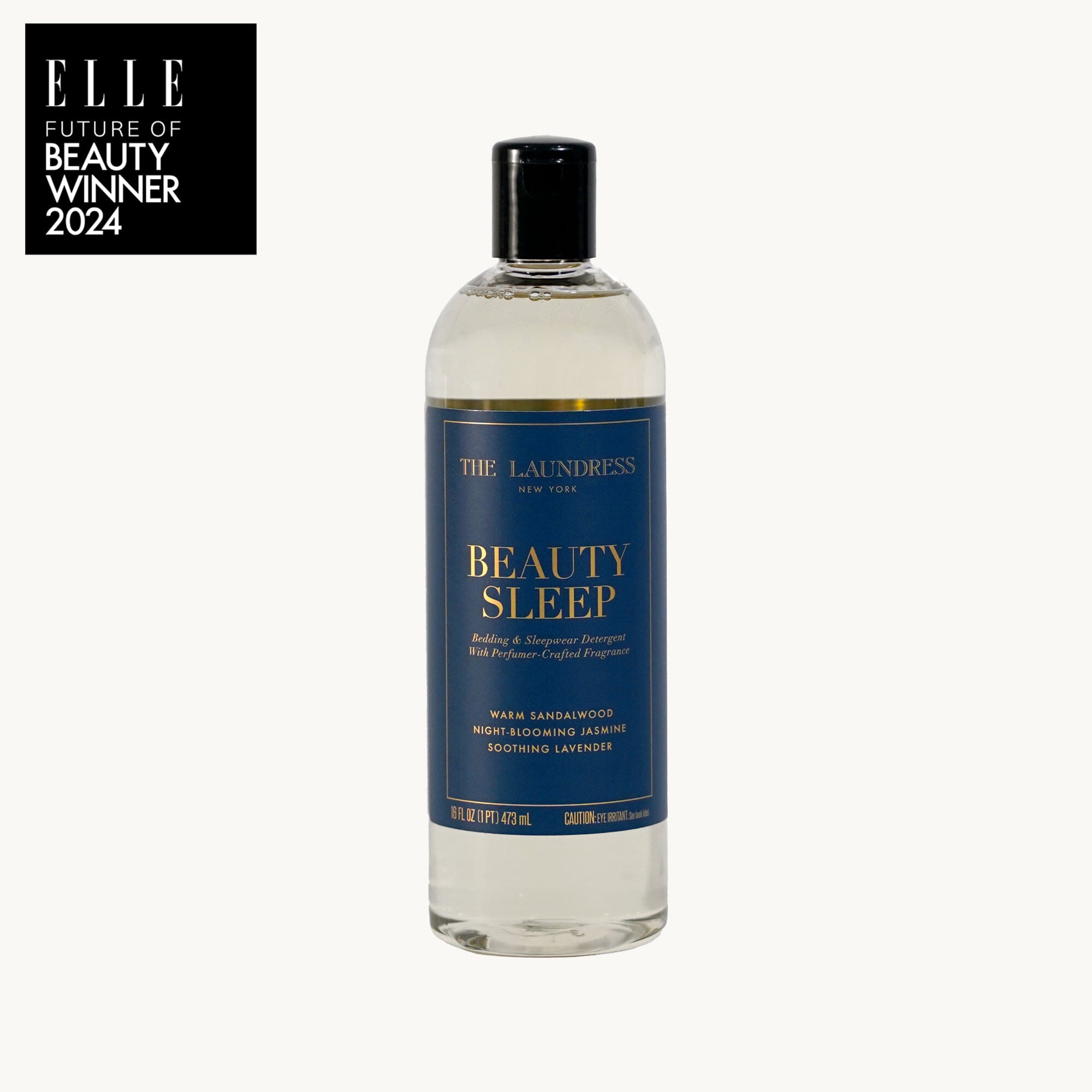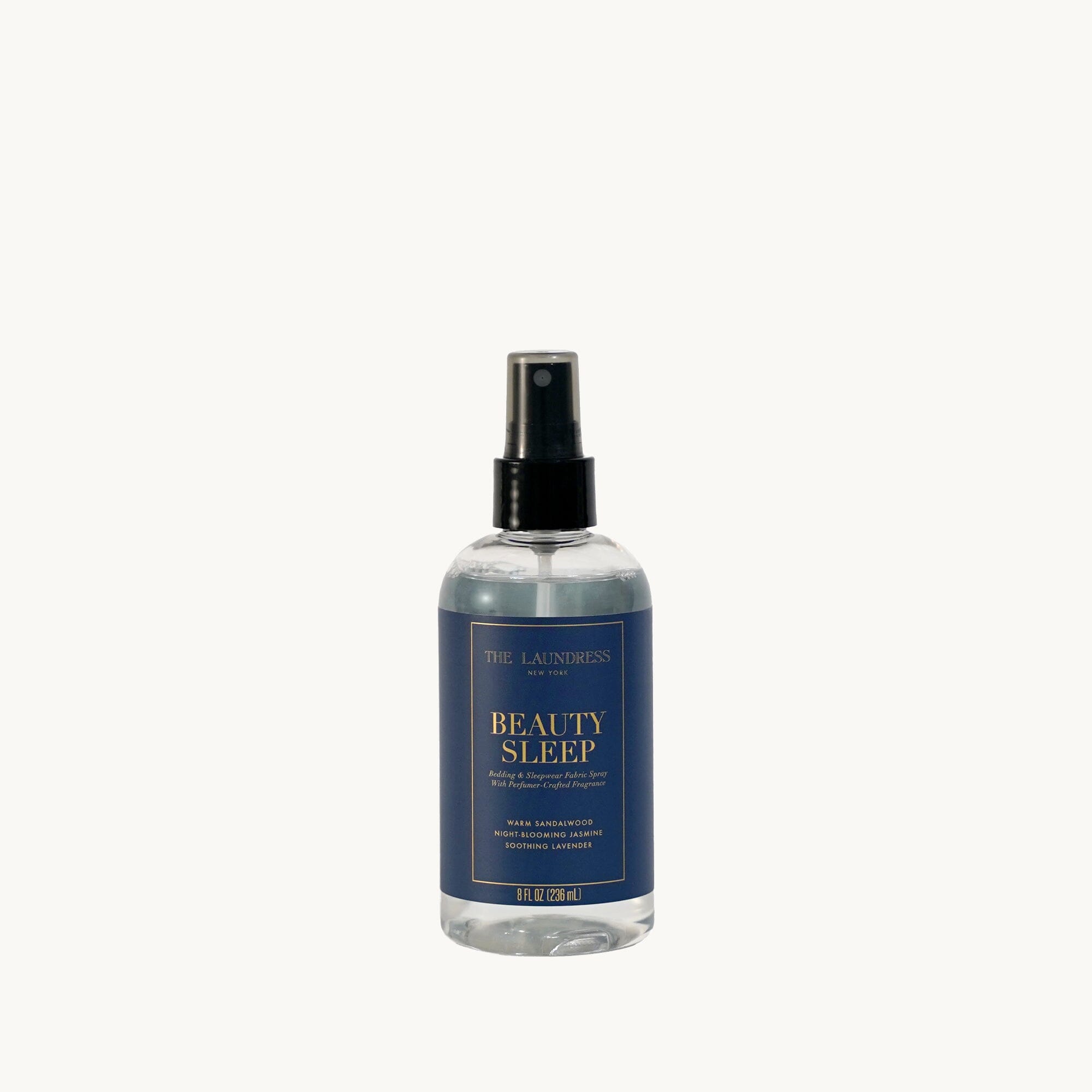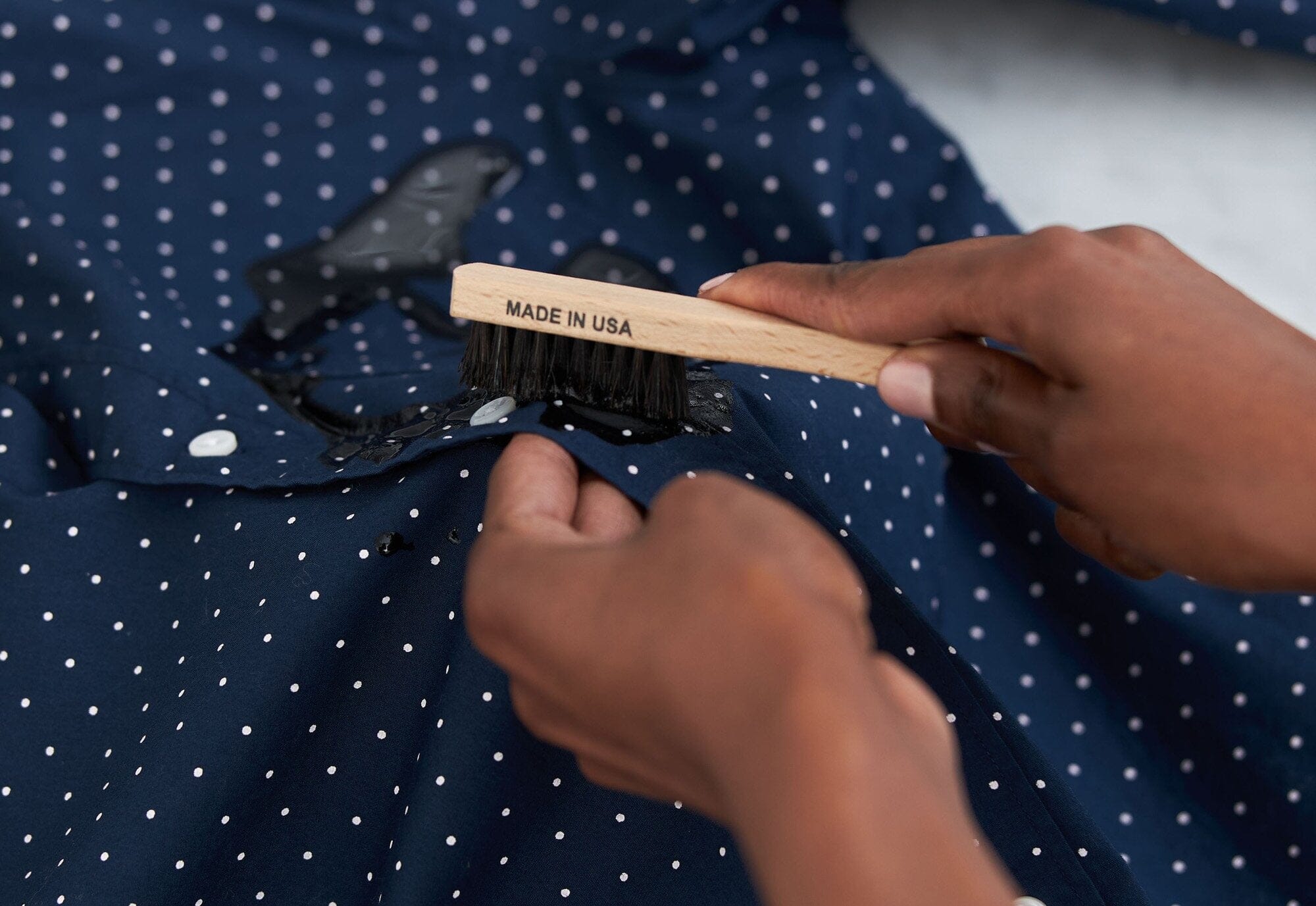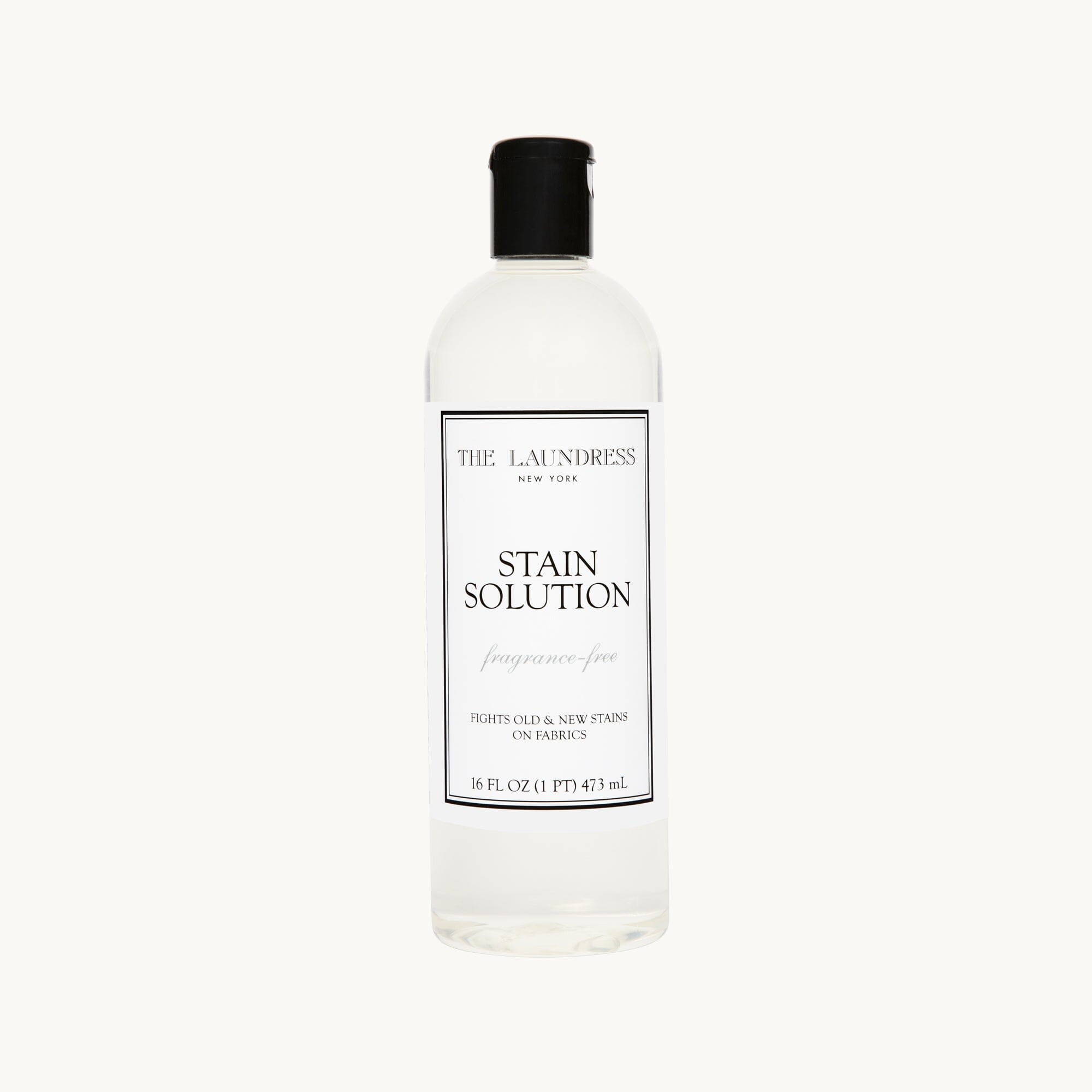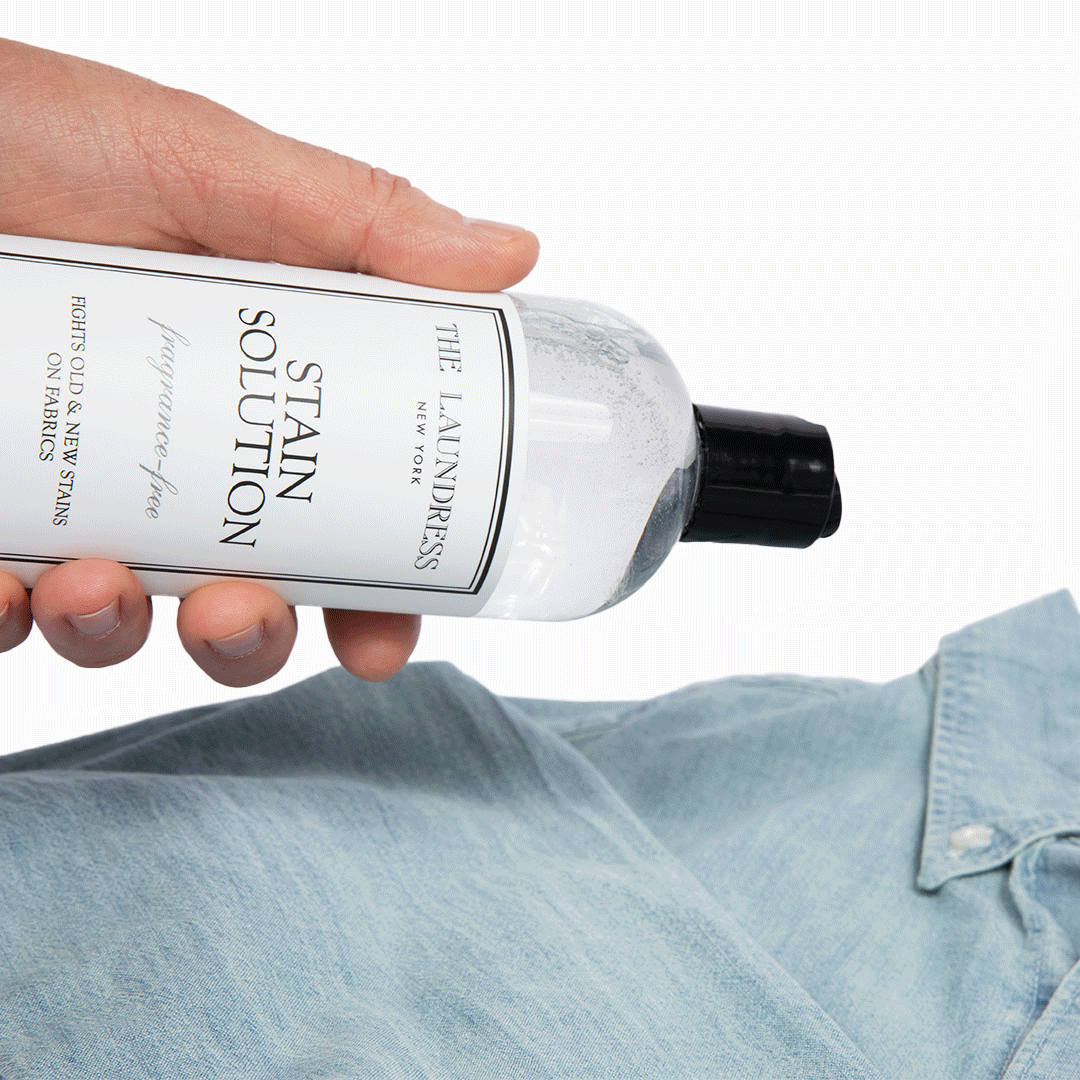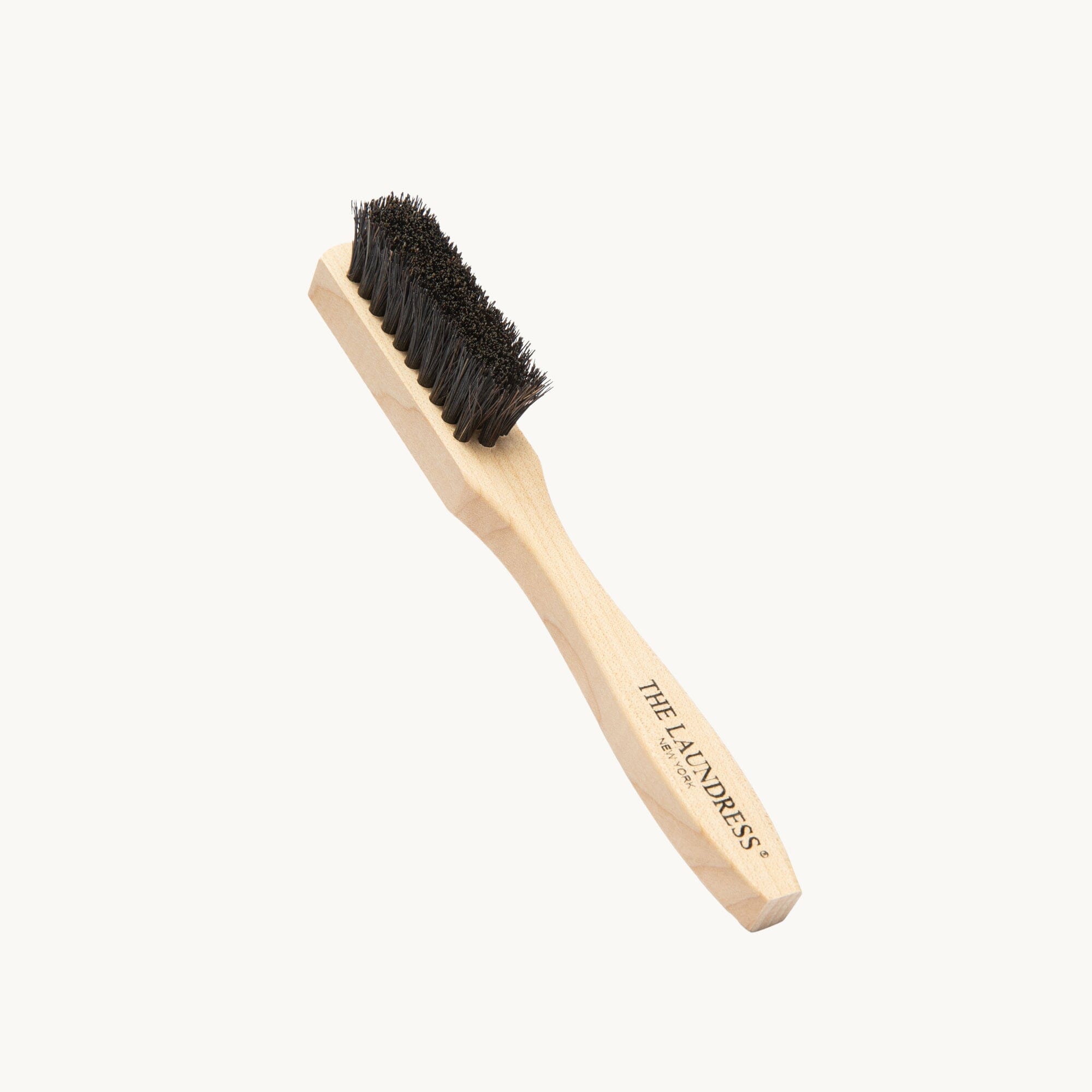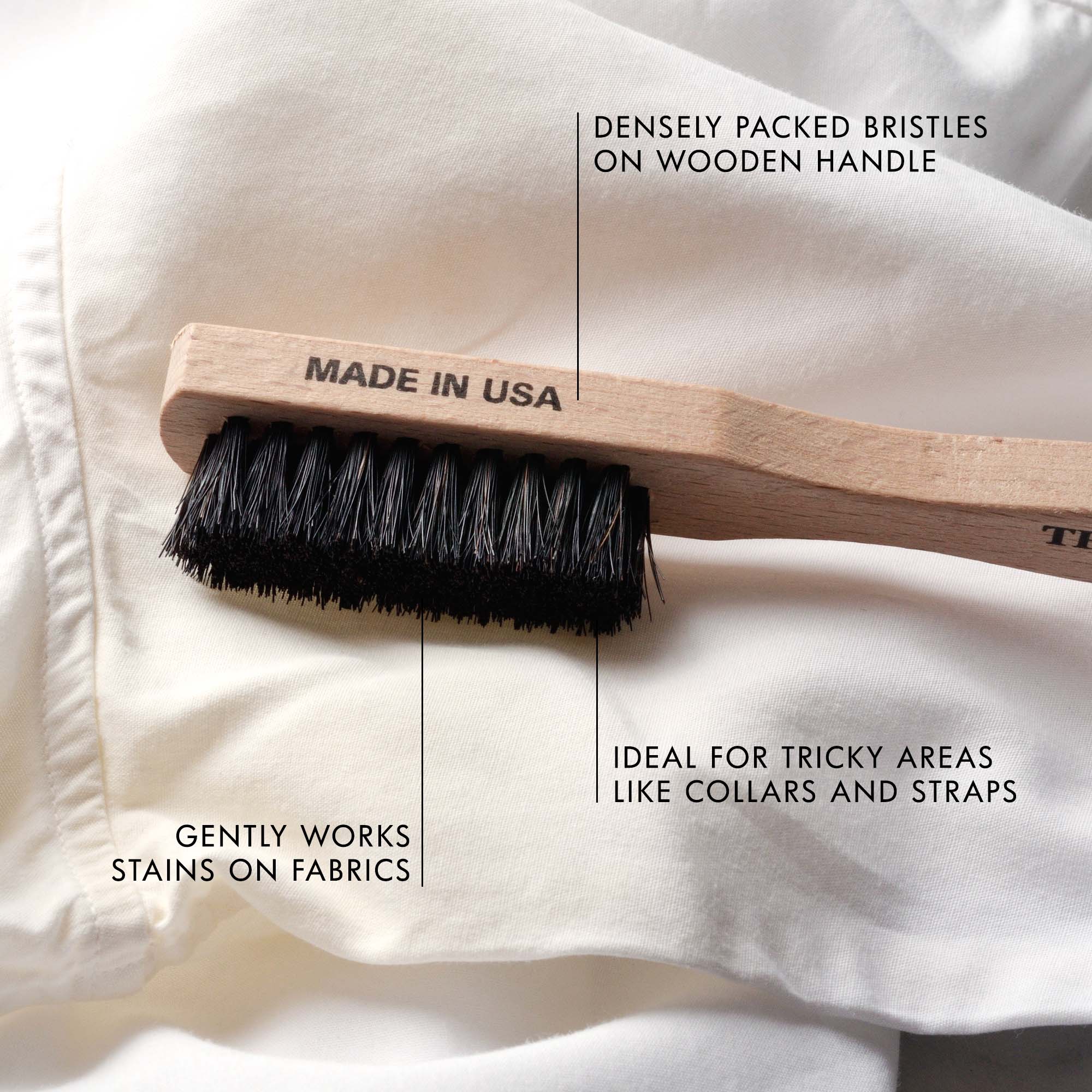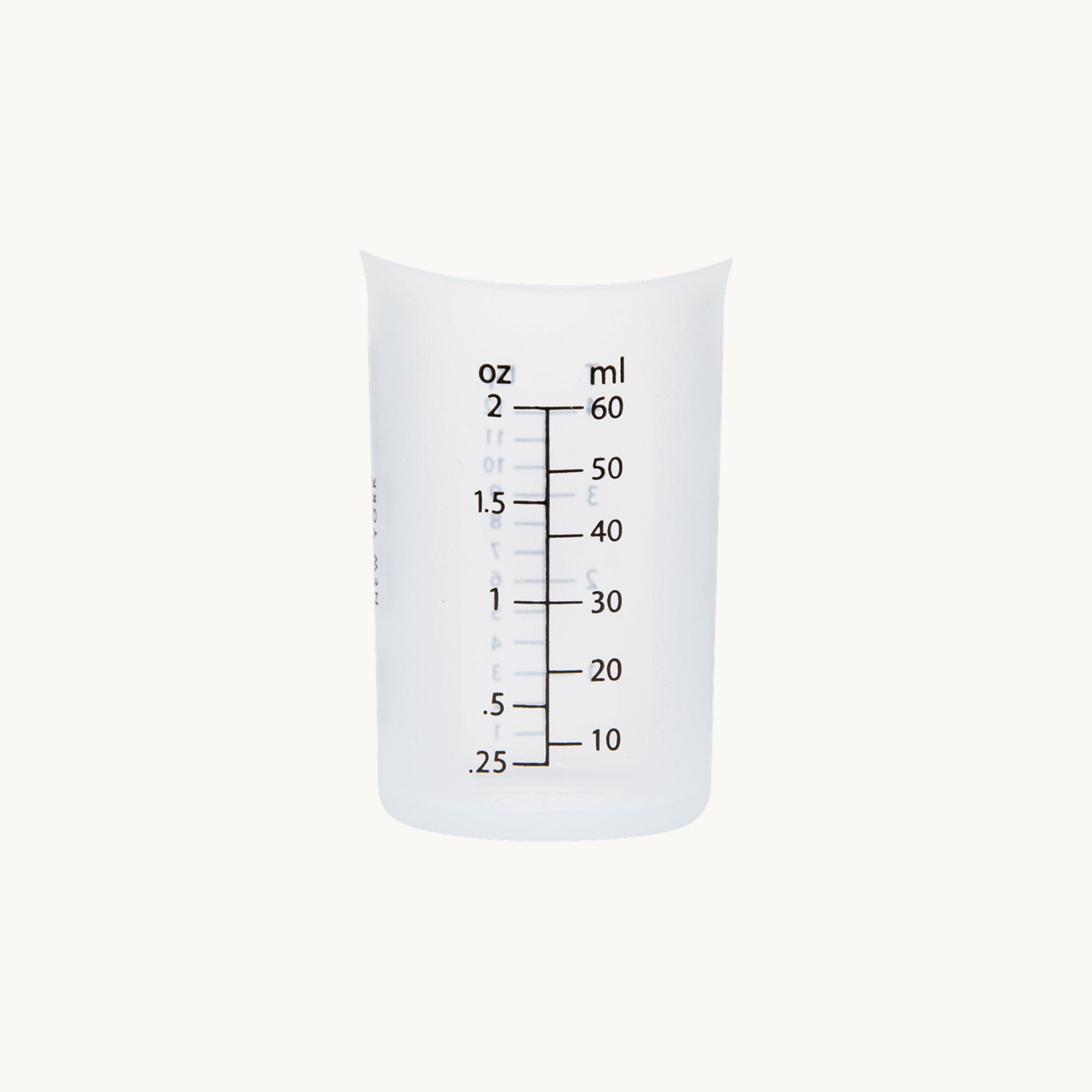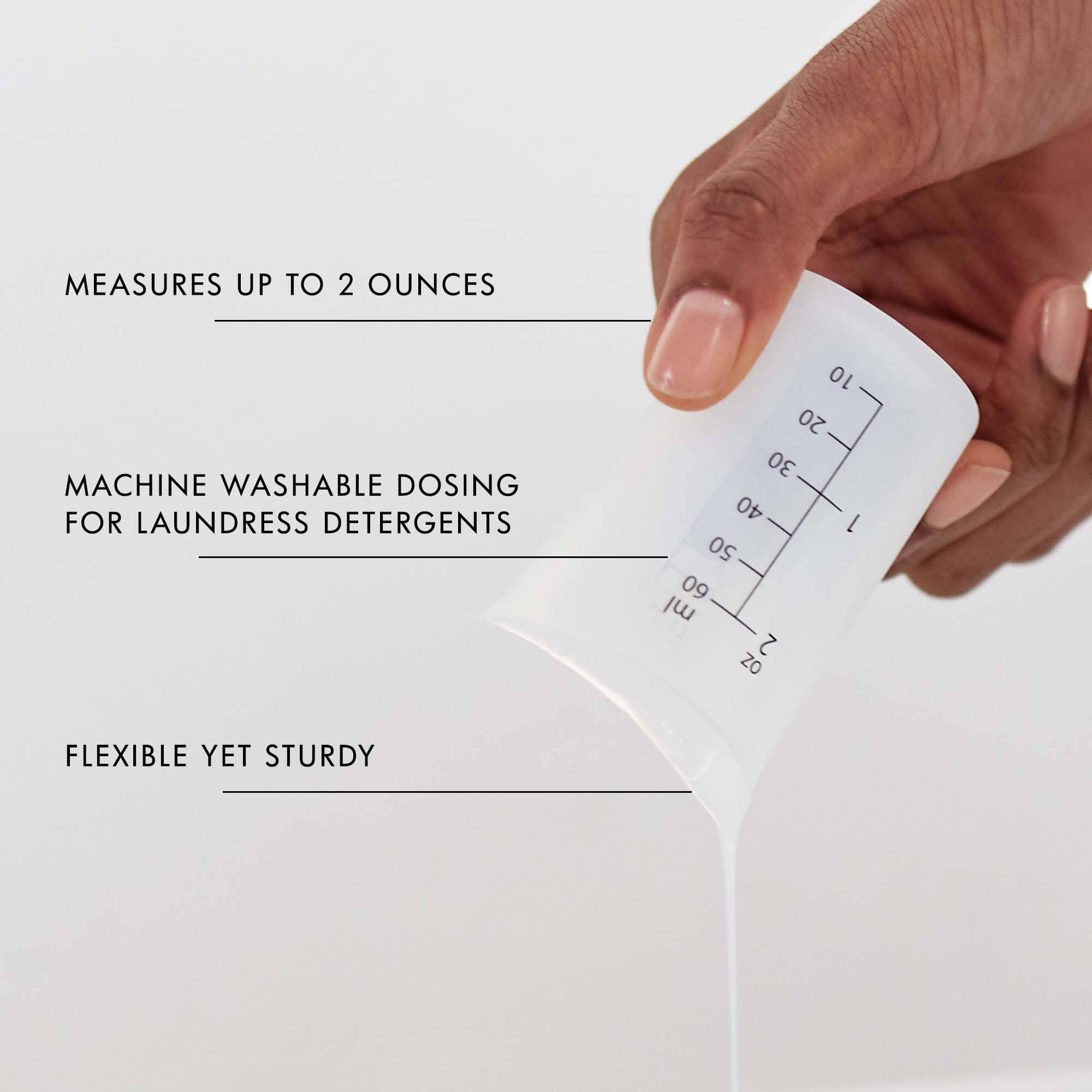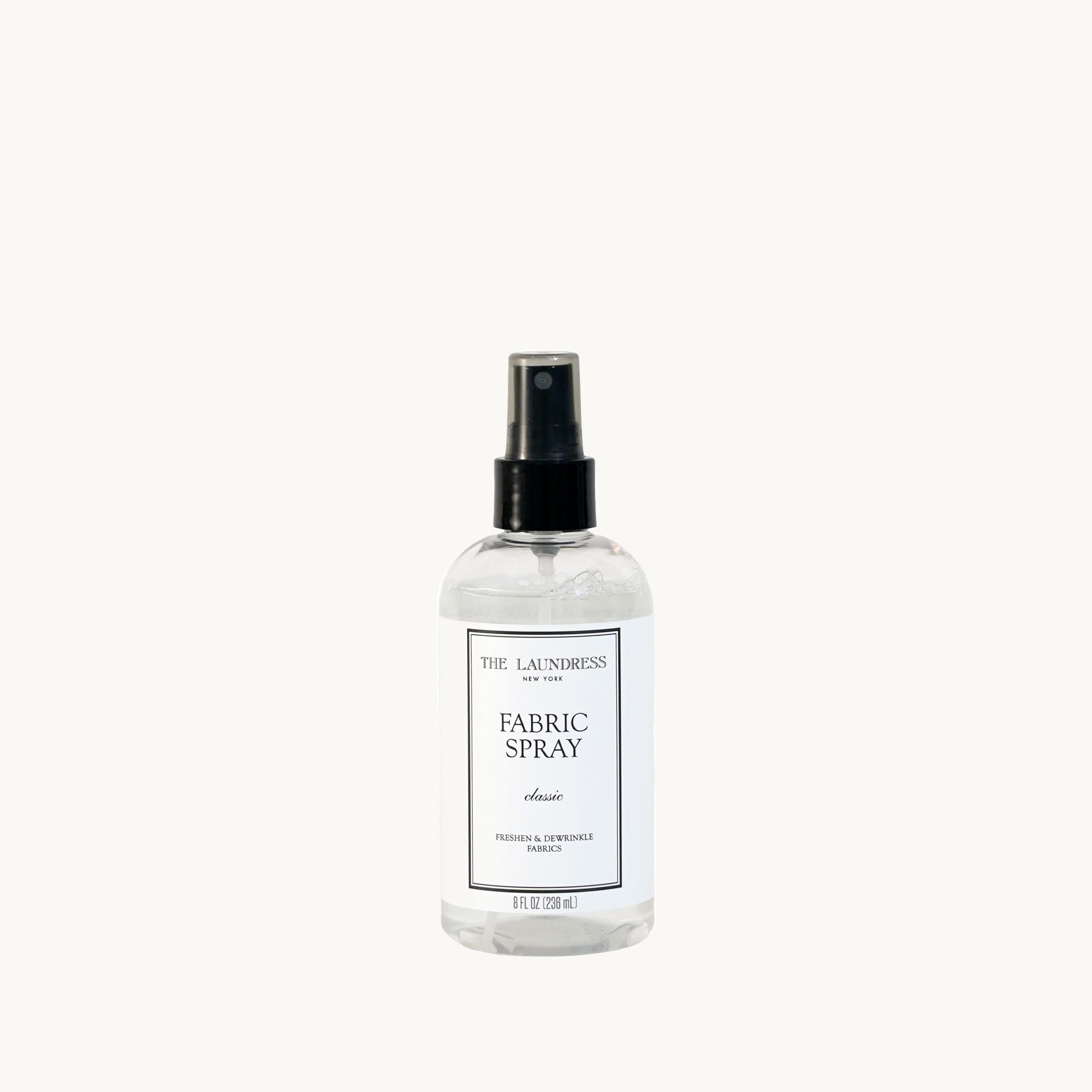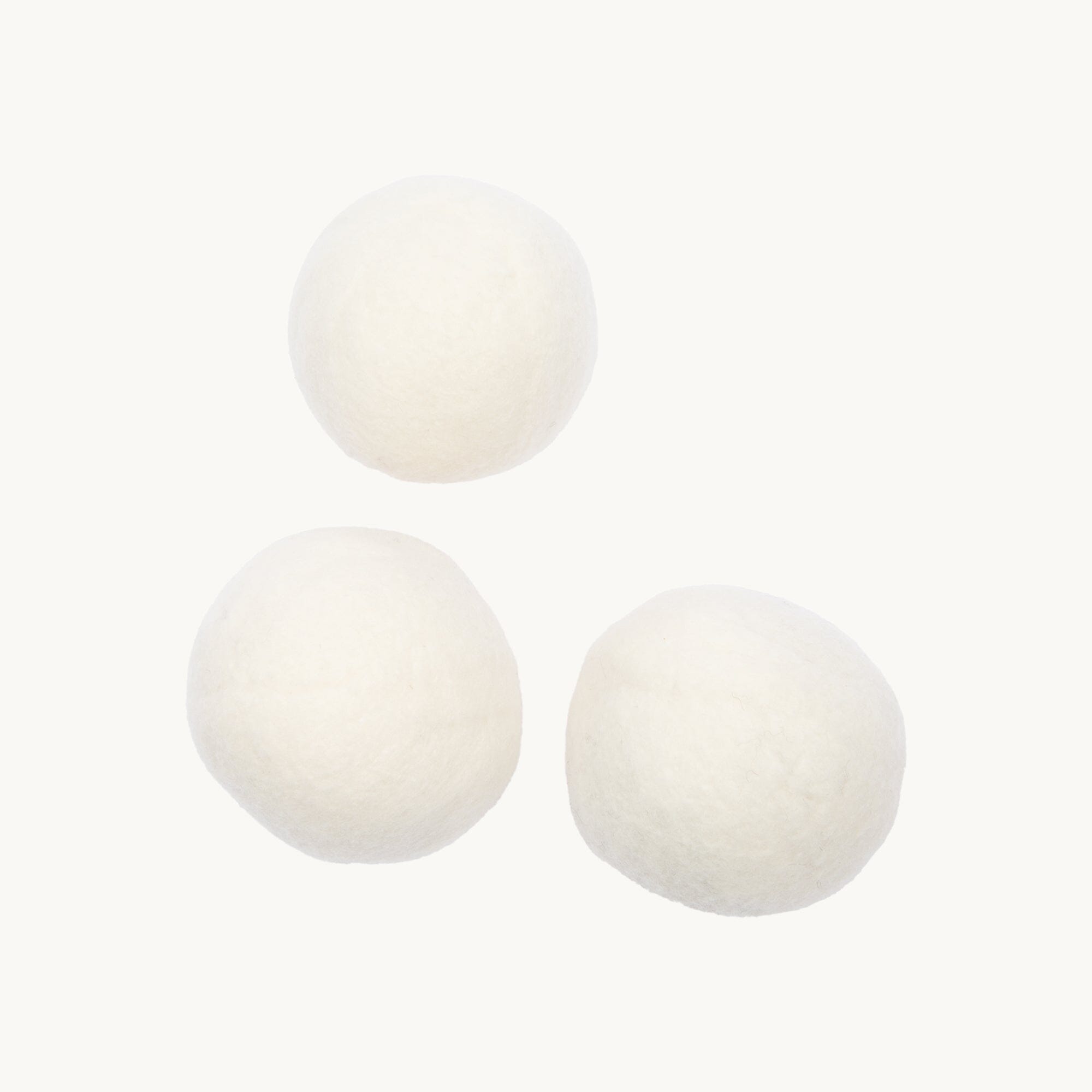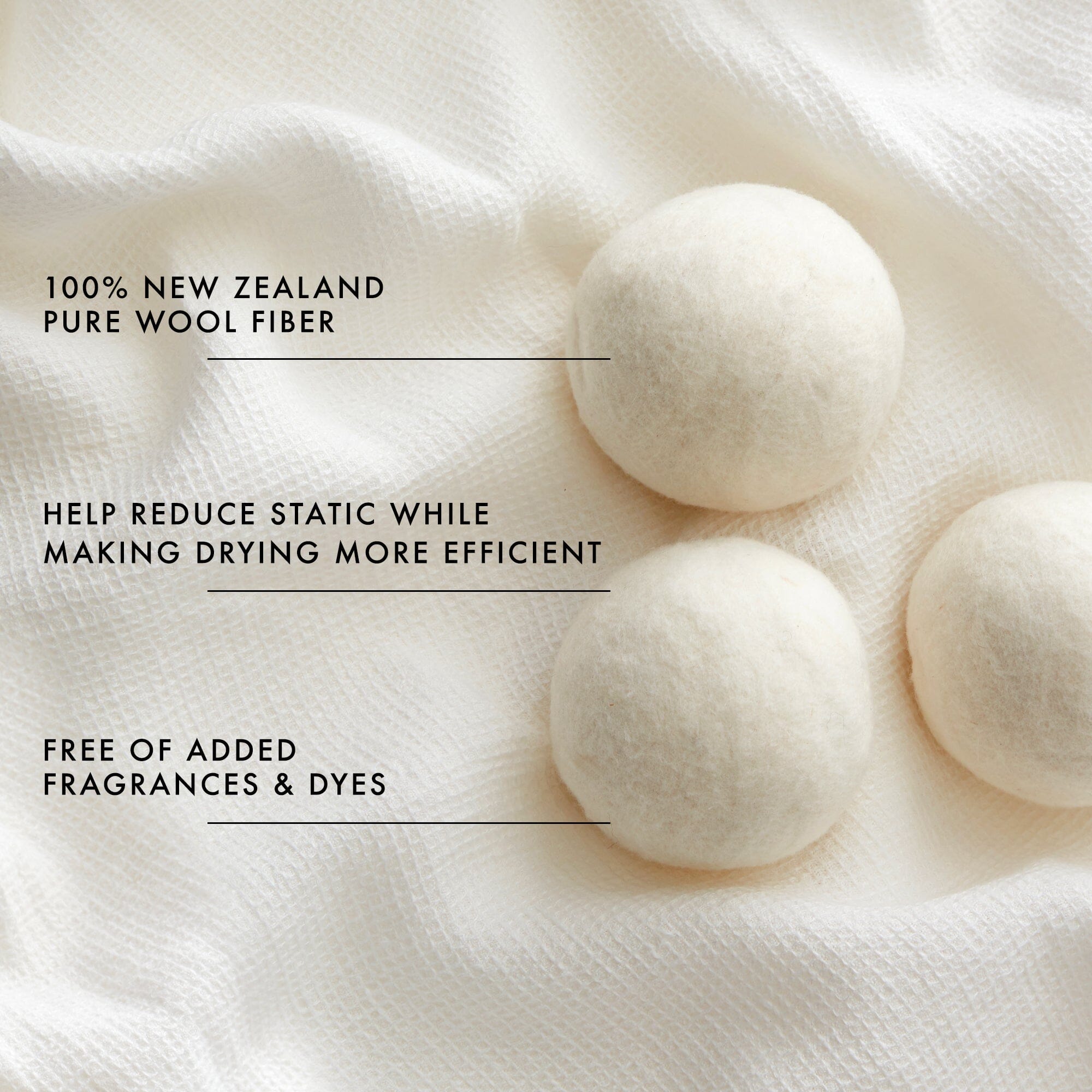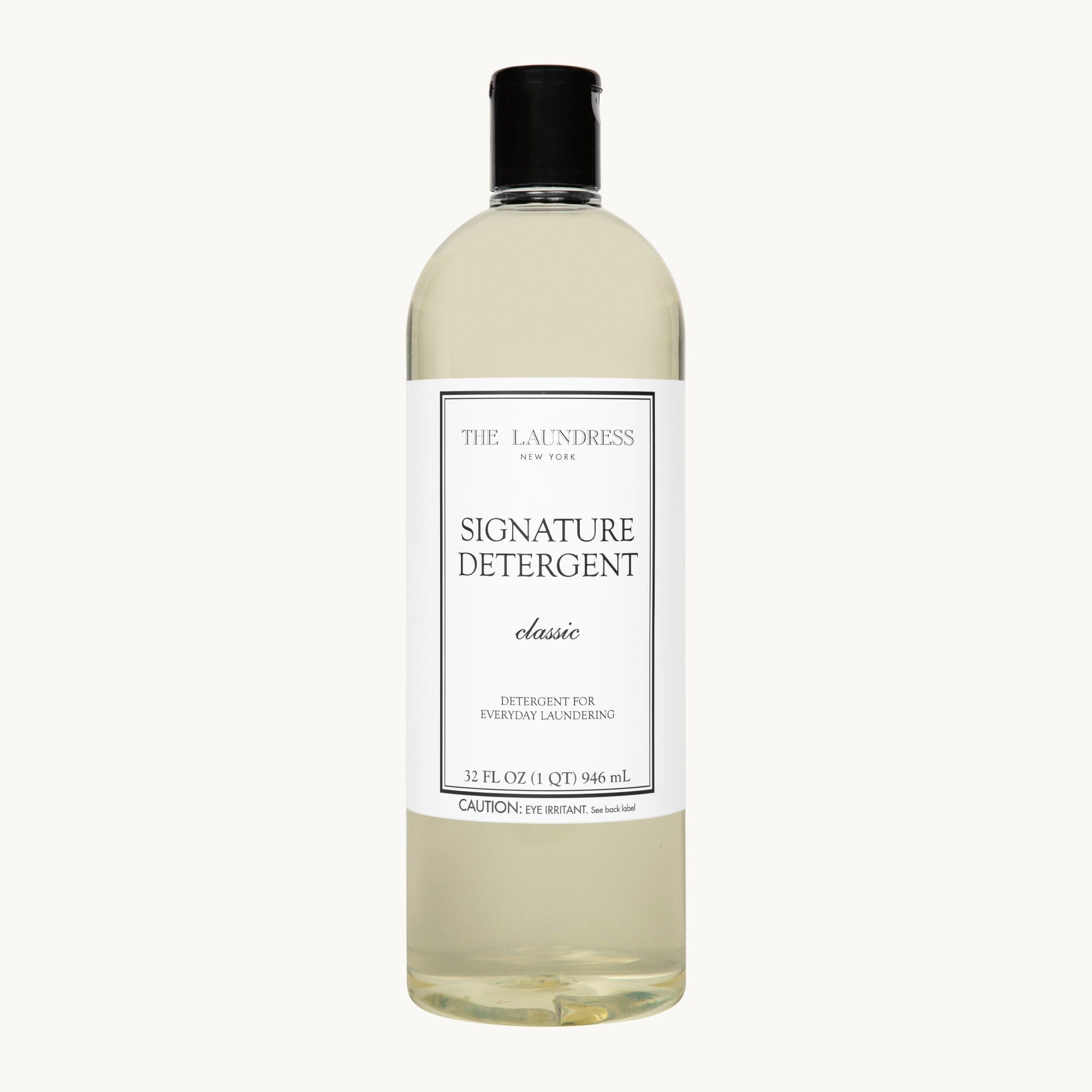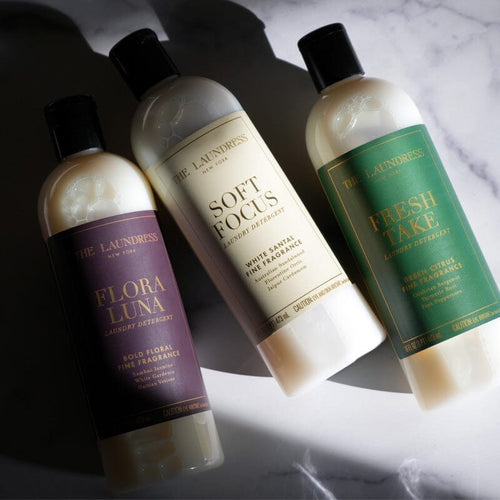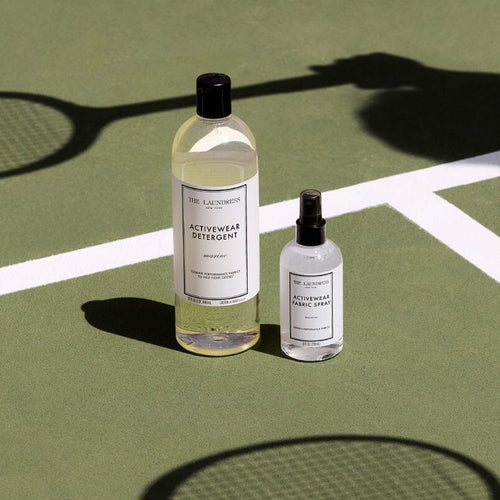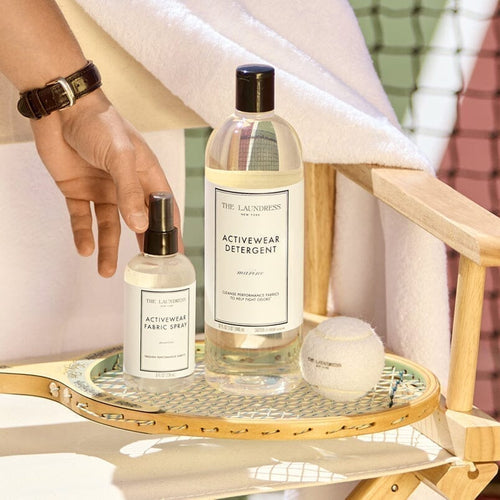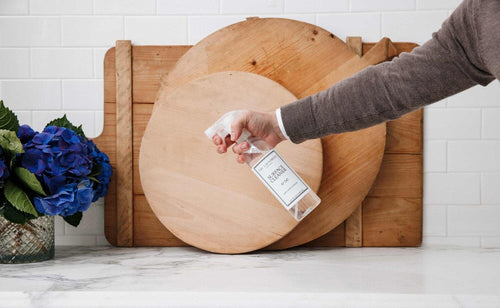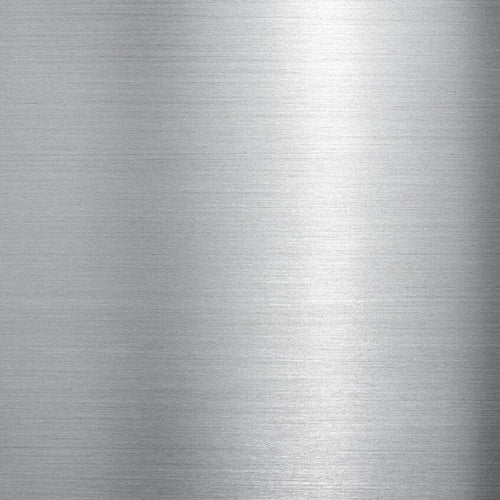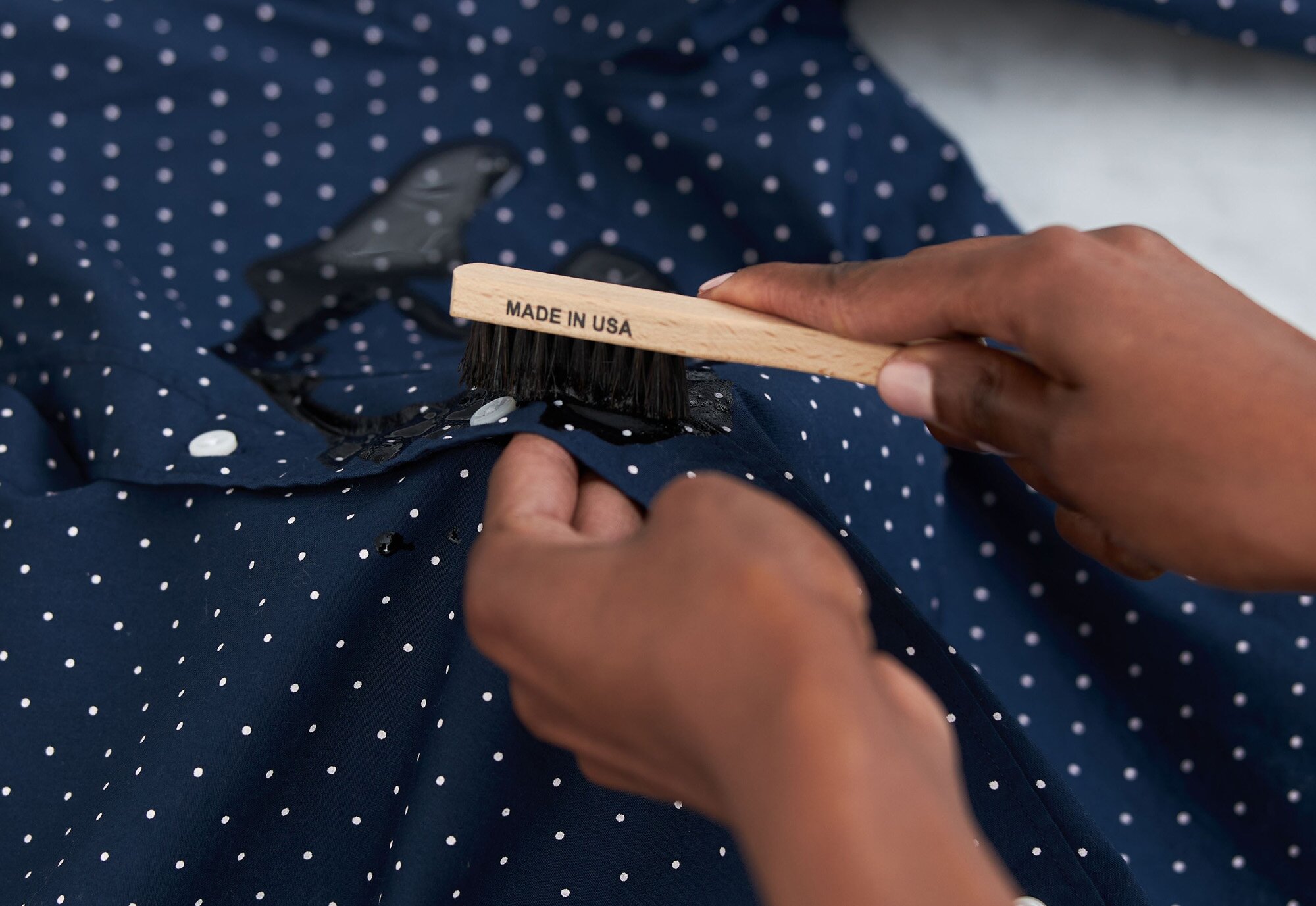
The Solution
Protein stains are biological and come from human and animal substances. It's important to treat protein-based stains with cool water during the pretreat stage to avoid "cooking" the proteins into the fabric. In addition, using an enzymatic stain treatment and detergent can help to target protein stains during the wash. Follow along with our top tips for protein stain removal, ahead! What to use to fight protein stains:
How To Pretreat
Step One First, thoroughly rinse the fabric with cool water to remove as much of the protein stain as possible. Use the pressure from the sink's faucet or sprayer to help to work the stain from the fabric. Step Two Next, apply our enzymatic Stain Solution formula, ideal for many protein-based stains. Work it into the fabric using a damp Stain Brush. Gently scrub, using circular motions. Step Three For older, tougher stains, soak before washing. Fill a sink or wash basin with tepid water, then let it soak for at least 30 minutes, and up to a few hours depending on fabric construction. Once your soak is complete, apply more Stain Solution and toss in the wash. After pretreating and soaking, rinse hands well with water.
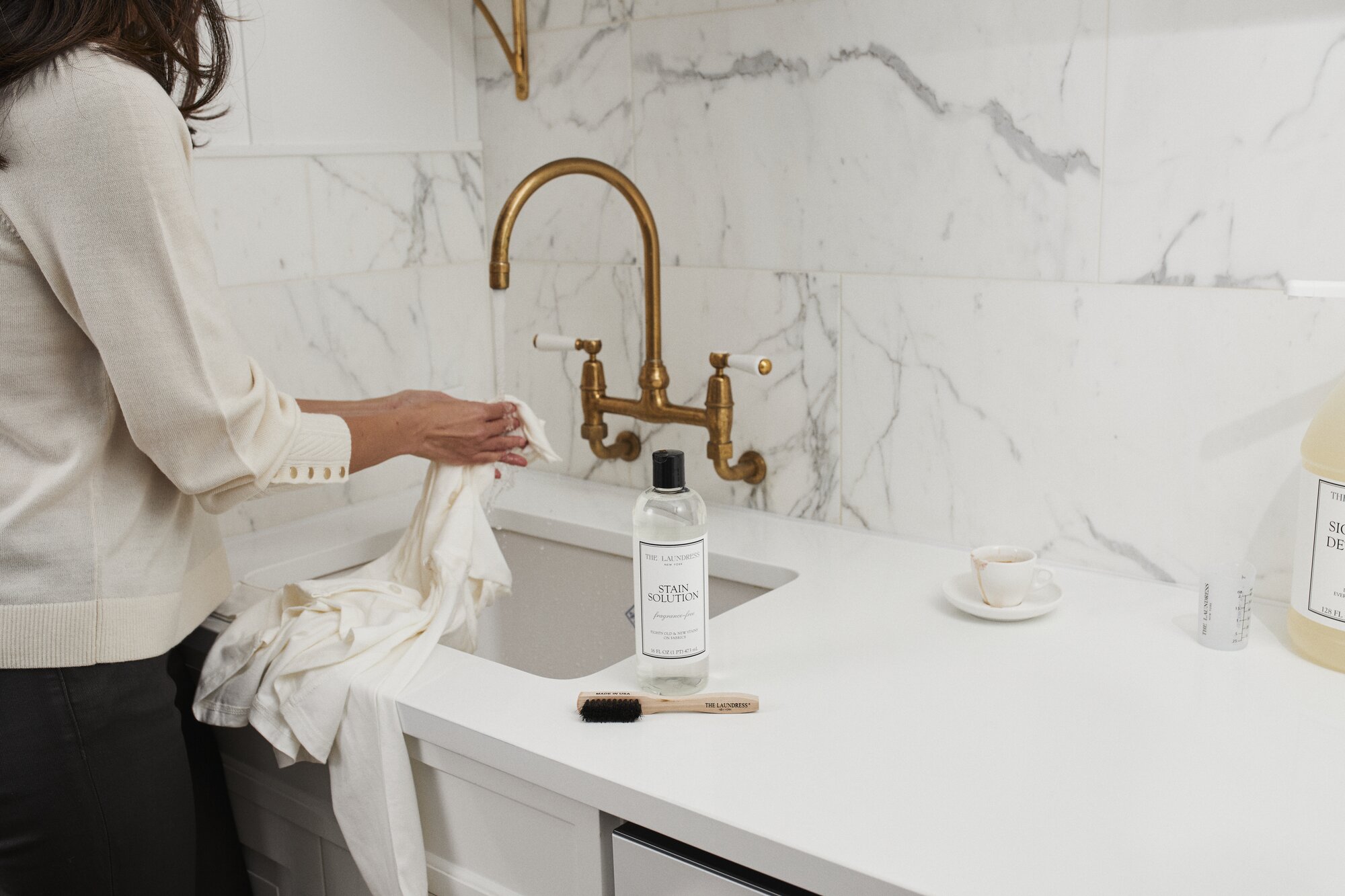
Deep Clean
Dry & Finish
When dealing with protein stained garments, always air dry items after the wash. Keep in mind the heat from a drying cycle may cause unseen stain residue on wet fabrics to cause a tougher stain, so it's best to play it safe.
Take Note: Our recommended stain treatment methods are based on textile science, and solely intended for use with The Laundress products. We cannot guarantee the success of products from other brands. Always test delicates and items tagged "dry clean" for color bleeding and water reactions before laundering. Kindly note that not all garments may perform and react as science would predict.
Shop The Story
Fights Old & New Stains On Fabrics
Aid Stain Removal
Dosing For Fabric Care
Dewrinkle Fabrics & Clean Laundry Scent
Fluff & Reduce Static During Drying
Detergent For Everyday Laundering


